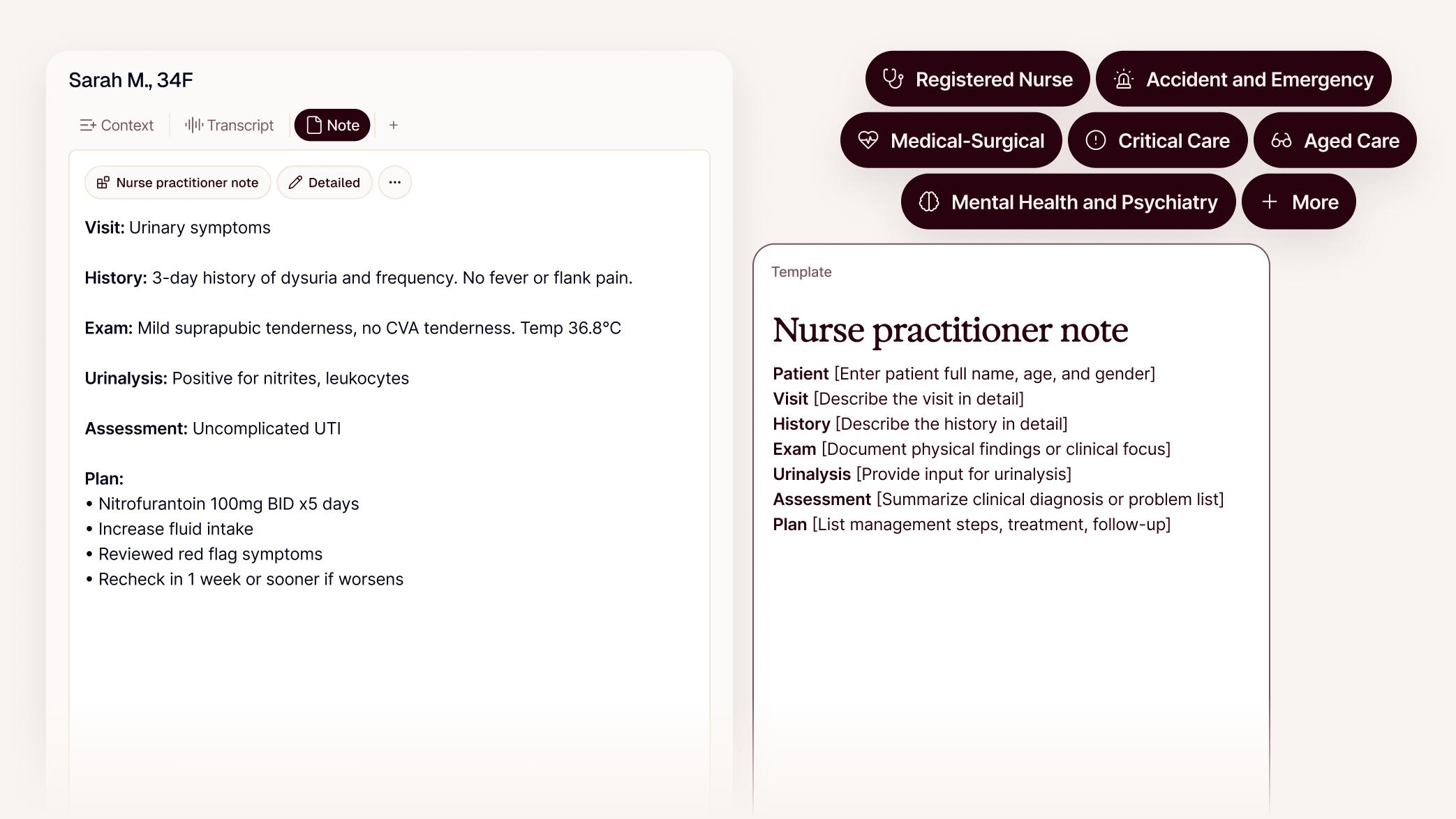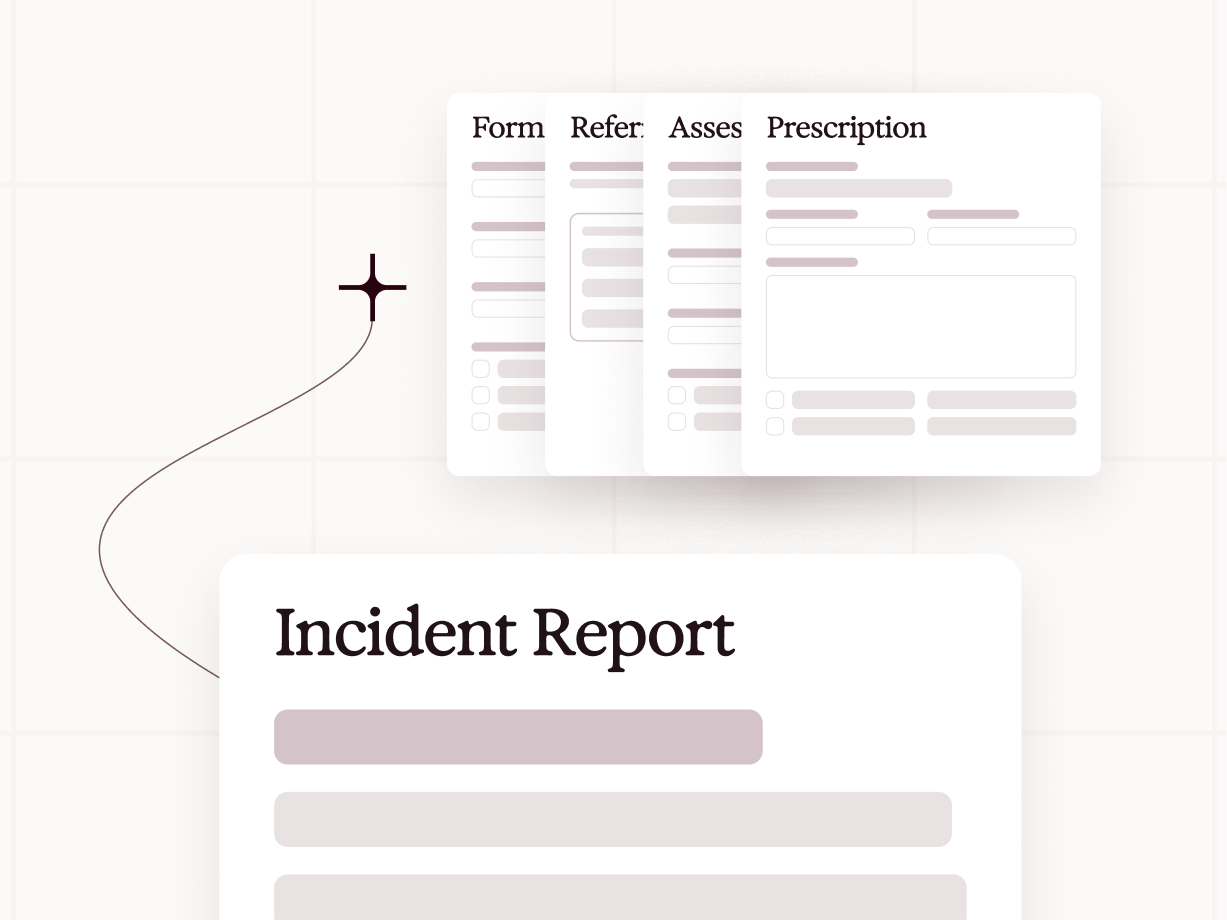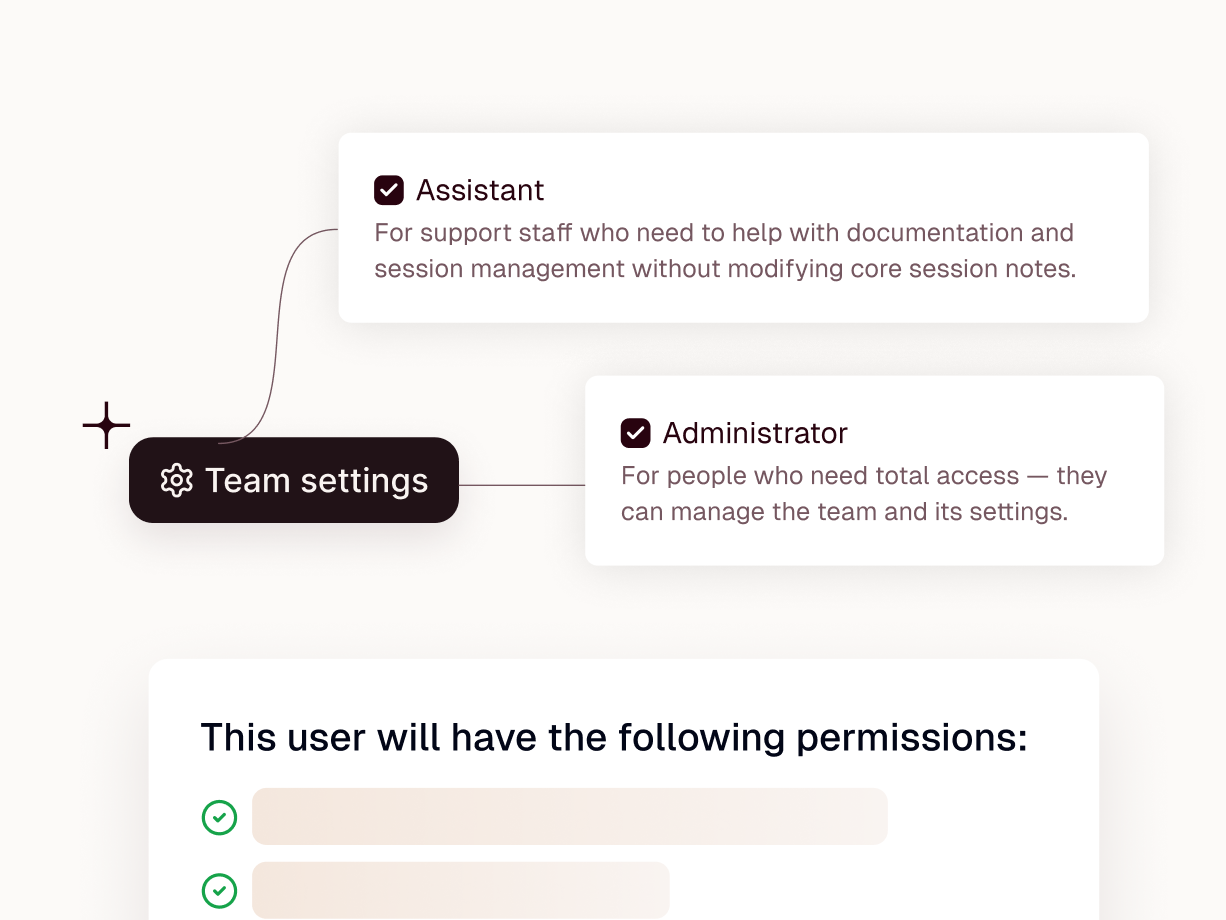A nurse’s guide to faster, smarter shift notes with Heidi
Ally Kendall
November 11, 2025•6 min read

You didn’t become a nurse for the paperwork. You did it to care, to act, to make people feel safe.
But between medications, call bells, and admissions, documentation never stops. You’re juggling notes mid-shift, scribbling reminders on your arm, trying to capture details that matter, knowing it’s vital but wishing it didn’t pull you away from the care itself.
Most AI tools were built for doctors. They focus on consultations, not the continuous rhythm of nursing work. They miss the structure and language of progress notes, handovers, and assessments that keep patients safe.
Heidi was built differently. It listens as you work, understands nursing language, and fits naturally into your routine. Whether you’re on a ward, in aged care, or visiting patients at home, Heidi captures and structures your notes in real time so documentation happens with care, not after it.
Today, thousands of nurses around the world use Heidi every week to document faster, hand over more clearly, and reclaim time for themselves and their patients.
How Heidi supports real nursing work
Nursing moves quickly between people, priorities, and emotions. Heidi fits into that rhythm, helping you stay present with patients while documentation takes care of itself.
Here’s how.
1. Shift notes that write themselves

You notice everything: colour changes, pressure areas, subtle signs of recovery. But it’s hard to capture those details in real time.
Heidi listens as you speak and transcribes your voice accurately, even in a busy ward or on a home visit. It recognises over 110 languages and can detect multiple voices or languages in one conversation.
Your words become structured progress notes in seconds. Observations, follow-ups, and condition changes are complete before the end of your shift.
If you’re working somewhere with patchy internet such as ED, theatre, or rural settings, the Heidi iOS app keeps listening offline and syncs automatically when you reconnect. Notes stay safe and care stays captured as it happens.
Try the Start-of-Shift Dictation Diary for early-shift capture or the Vital Signs Observations template for routine obs, both designed by nurses at Heidi, for nurses.
2. Handover without the guesswork

Handover is where safety lives. But after twelve hours on your feet, details can blur. Heidi keeps them clear.
Notes from your shift flow into a structured summary that highlights what’s changed, what’s at risk, and what needs follow-up. Heidi’s Context brings together previous notes, care plans, and assessments so the next nurse instantly sees the full picture.
Need to confirm a medication or abbreviation? Just ask Heidi, your built-in knowledge partner, for accurate, contextual answers without leaving your workflow.
Use the ISBAR Handover for concise clinical communication or the End of Shift Handover Summary (Multi-Patient) template when handing over multiple patients.
3. Incident reporting, done in the moment

When a fall, medication error, or pressure injury occurs, timing and accuracy matter. With Heidi’s iOS app, you can document incidents hands-free, in the moment, while staying focused on your patient.
Each report is automatically structured to match your preferred format, complete with timestamps. Add wound photos, care updates, or observation charts, all linked directly to the note in real time.
The result is accurate, compliant documentation that supports safety and quality without pulling you away from care.
4. Smarter care planning, shared across the team

Care plans evolve constantly. Heidi keeps them up to date and visible for everyone involved in care.
Use nursing-specific templates for wound management, falls risk, or medication administration, or create your own in minutes. Each plan follows real nursing logic: assessment, intervention, evaluation.
For structured, shared planning, start with the Nursing Care Plan template.
When you need reference information, medication guidance, or terminology support, just ask Heidi within your clinical context. It reduces searching and improves collaboration across the team.
5. Admissions and discharges, finished before you are

From intake to discharge, Heidi keeps documentation consistent and complete.
As you speak, it fills in admission or risk assessment forms automatically, ensuring every field is complete and standardised across the team. Heidi includes a growing library of region-specific forms used in hospitals and government facilities, so your notes align with local requirements from the start.
Heidi integrates with Epic, Cerner, MEDITECH, and more. Patient data flows both ways, bringing demographics in and sending documentation out without extra clicks.
That means no double entry, no lost information, and no chasing fields after your shift ends.
Built for the pace, precision, and purpose of nursing
There are plenty of tools for doctors. Heidi works for nurses too. It understands the multitasking, movement, and mental load that define your work and adapts to it.
Heidi isn’t here to replace the human side of nursing. It’s here to protect it. Every note you write is a reflection of your care, and every minute you save is a chance to care more deeply or simply to rest.
Sign up for Heidi today. It’s free and ready to use on your next shift.
Keep Reading
Blog
Healthcare Innovation: Definition with Examples
LJ Acallar
Nov 11, 2025
Blog
AI Medical Coding: Definition and Examples
LJ Acallar
Nov 7, 2025
Resource

Blog
Medical Dictation Software: How It Works in Healthcare
LJ Acallar
Nov 6, 2025
Resource

Blog
What is Medical Charting? Definition & Best Practices
LJ Acallar
Nov 5, 2025
Template

Blog
Medication List Template with Examples
Hannah Heramia
Nov 3, 2025

Blog
Building the AI Care Partner for Every Clinician
Dr. Tom Kelly
Oct 31, 2025